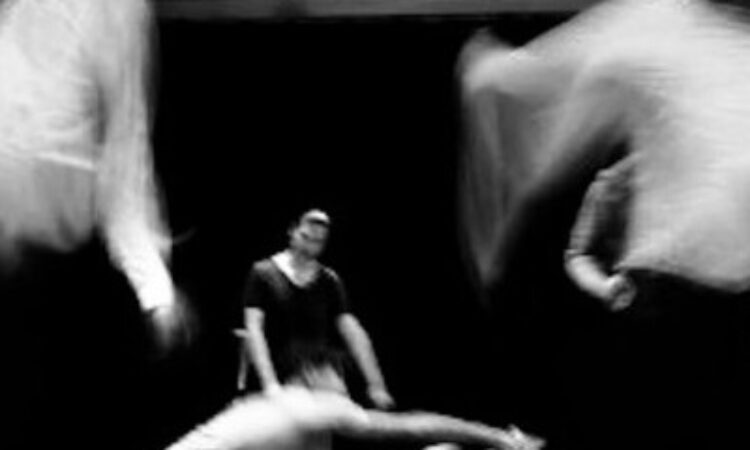With physical contact largely put on pause during the pandemic, Contact Improvisation (CI) practitioners have taken the moment to unpack issues of equity and access in a form that signifies profound liberation for some and trauma for others. Hosted by Earthdance, the Future of CI Conference was a three-day virtual international gathering of presenters grappling with issues of race, gender, sexuality, disability, power, consent, and safety as they envision a world of CI beyond the pandemic.
This two-part essay reflects upon critical moments from sessions I attended, while respecting the confidentiality of unrecorded open discussions.
A mix of optimism and criticism permeated the Zoom panels, workshops, and discussions, mirroring practitioners’ mixed experiences with the form itself. Many (myself included) have found liberation in CI’s focus on interpersonal connection over individual achievement and its absence of specified gender roles. Yet many of us also struggle to feel safe in a form that remains predominantly white (despite influences from Asian martial arts forms like Tai Chi and Aikido) and fraught with issues surrounding consent.
In some ways, CI’s utopic vision of universality—that it is for all bodies—obscures actual power imbalances that play out in CI spaces. In a “Long View” panel that unpacked the complexities of CI’s 50 year history in the US, veteran practitioner and Oberlin College Professor Ann Cooper Albright recalled a strong initial resistance when she discussed gender issues in contact improv spaces. Despite chauvinism and sexual harassment that played out at jams, many in the community claimed the topic was irrelevant because CI is theoretically gender neutral.
The notion of the neutral body also threatens to erase the importance of racial identity. In the same panel, Ishmael Houston-Jones—a renowned Black choreographer who nonetheless admits to feeling like an imposter in discussions of CI—points to the “Wrong” Contact Manifesto he created with collaborator Fred Holland in 1983. They declare that they are Black, they wear heavy boots, and they “fuck with flow,” among other things that distinguish themselves from the “soft, mushy, granola” energy they saw in white, liberal-arts-college-bred contact spaces. Houston-Jones doesn’t quite identify as a CI practitioner because of these differences. It’s worth wondering if the CI community has dampered its own political potential by nudging out those who offer needed disruptions in thinking.
Also pushed to the margins are disabled and neurodivergent practitioners, including many who are particularly qualified to rethink the community’s assumptions surrounding communication and consent. In a session on Neurodiversity in CI, Canadian artists Sarah Jones, Kathleen Rea, and Jen Roy discussed how CI environments could be modified to support those across the spectrums of neurodiversity. Suggestions ranged from creating sensory-friendly spaces to questioning expectations of social interaction and avoiding generalizations about which forms of touch should feel good for all bodies.
As with many conversations about disability, there were discussions of conflicting access needs: the possibility that what makes a space more inclusive to someone might make it less accessible to others. Extrapolating this paradox beyond disability alone, I’d suggest that conflicts of access can occur across multiple intersections of identities and circumstances. Some people are most comfortable with touch in single-sex environments, while others are excluded by binary gender divisions. A space with limited noise and visual distractions might read as sensory-friendly to some, yet culturally whitewashed to others.
This is not to say that inclusion in CI is a lost cause if it cannot be achieved perfectly. But it might be better approximated through multiple spaces than a single utopic one. Various speakers and attendees spoke to the importance of identity-specific spaces—for BIPOC, queer and trans people, or disabled people—for those who don’t feel safe in the mainstream CI scene.
Perhaps it’s not a coincidence that some of the most promising CI communities are forming in the Global South, where the practice can exist outside a default of whiteness. In the second part of this essay, I will highlight conversations that affirmed the radical potential of CI, in addition to these much needed critiques.






